
The average US smartphone user receives up to 46 push notifications every day. So it makes sense that users become disgruntled with overbearing apps breathing down their necks. And, as such, 37% of users will disable push notifications if they receive 5 in 1 week from a particular brand.
With 4.68 billion global mobile customers using 205.4 billion apps, it's only logical that marketers benefit from a direct line of communication with their users.
Enter Push Notifications
The potential to increase success rates across a multitude of KPI’s is too good to turn down. So let’s look at some of the ways you could benefit from a push notification strategy.
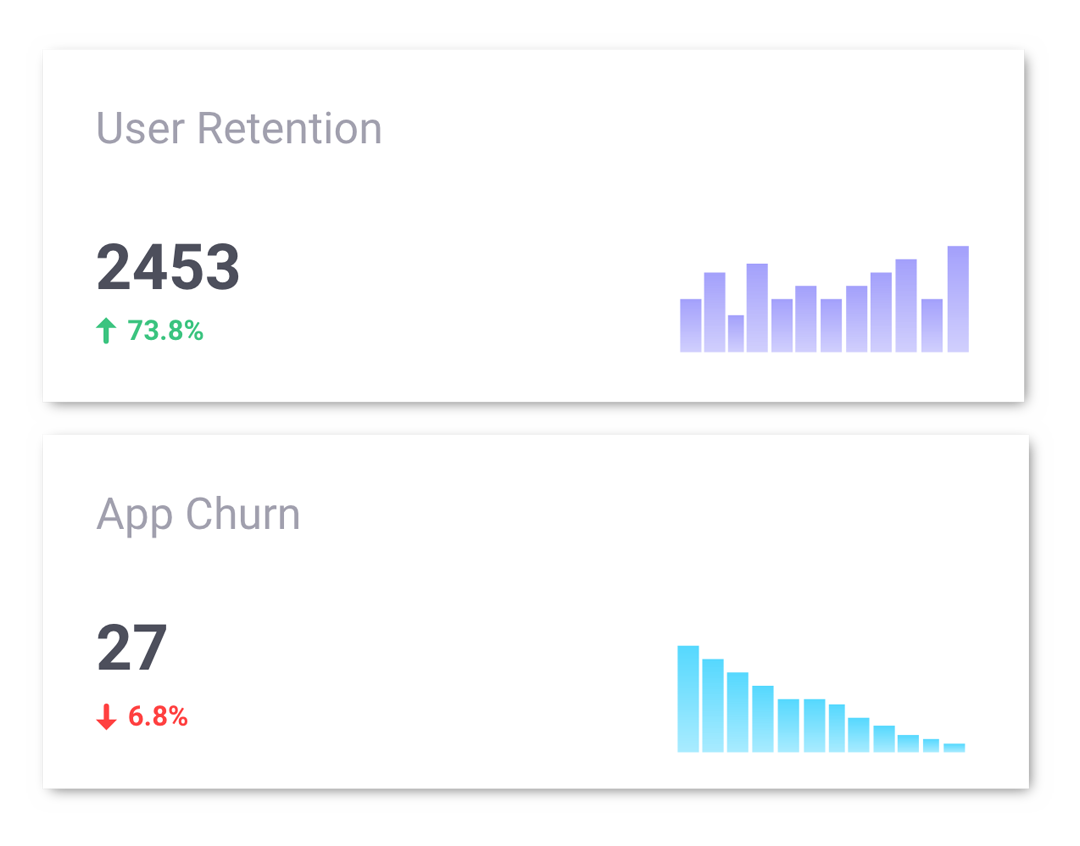
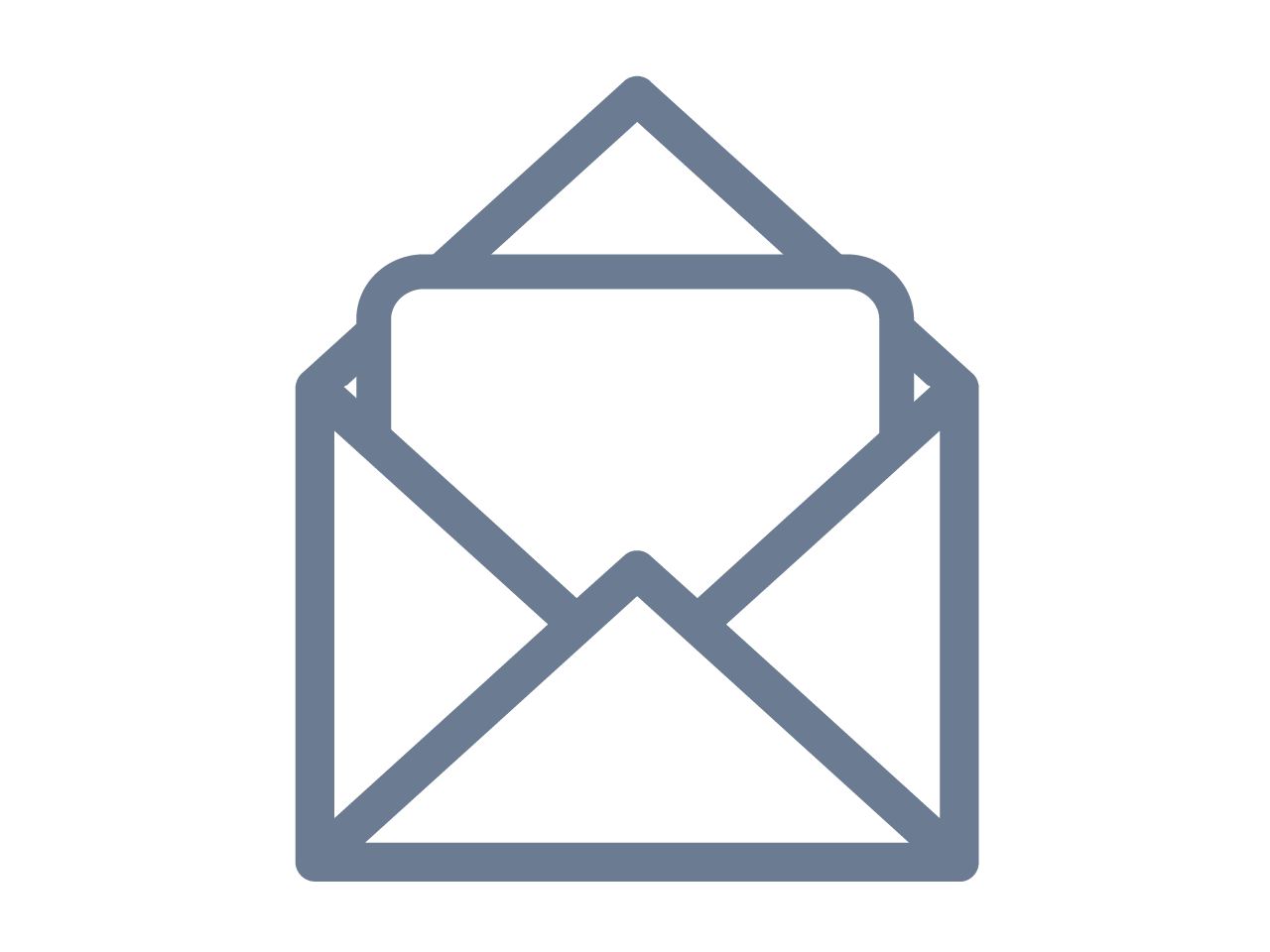
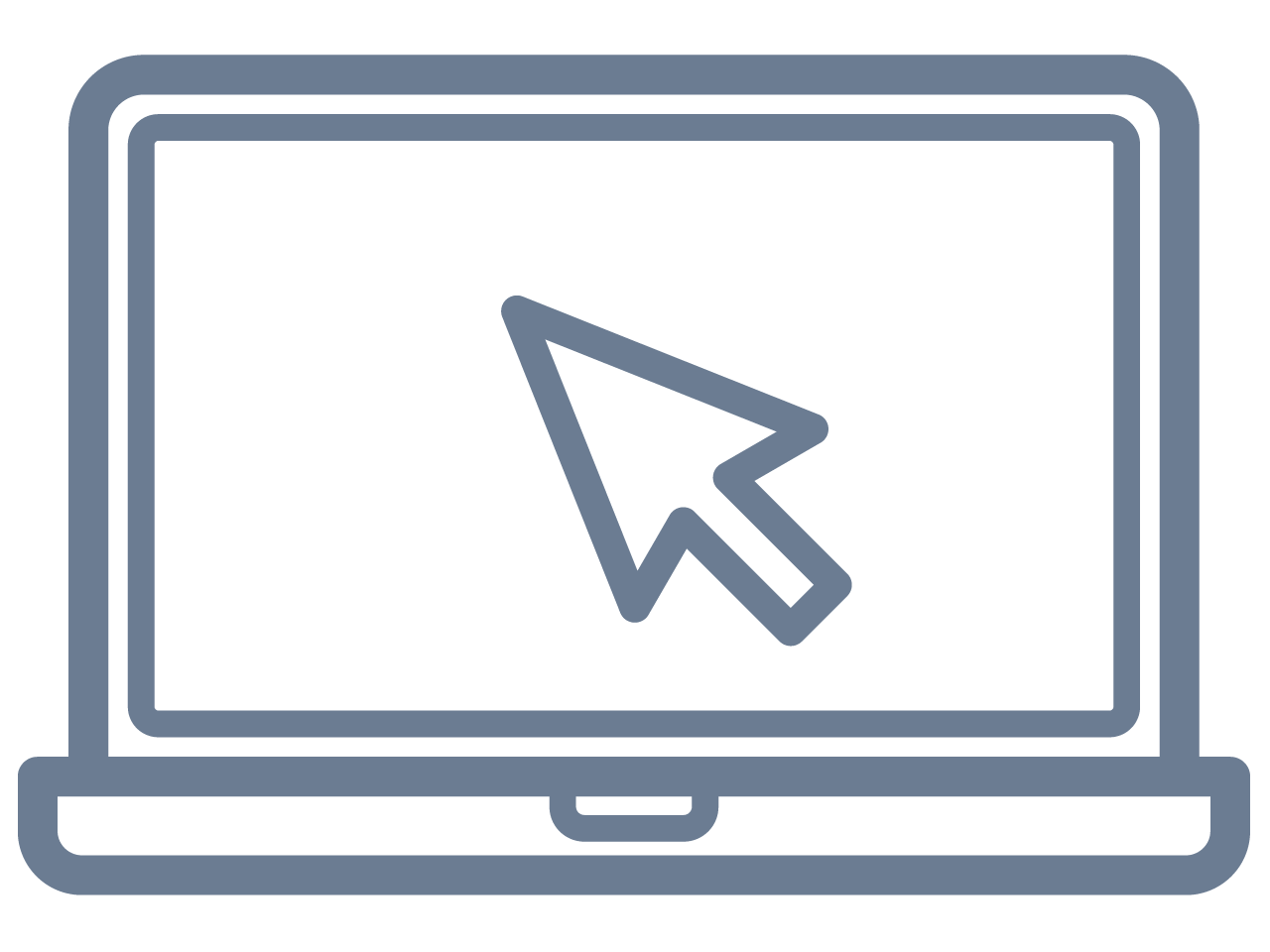

Considering Apple’s status as the world’s most valuable company, it’s strange to see them lag so far behind Android in terms of opt-in rates. Less than half of iOS users opt-in for push notifications, and it’s largely due to their onboarding structure.
In contrast to Android, iOS does not mention user permissions until after an app has been downloaded. The first time a user opens their newly downloaded iOS app they are faced with a dialogue box, like this;

At this point, the user does not know the requirements of the app and is likely to deny permission. Once a user selects deny there’s no second chance. The only way to get permission from then on is a ‘re-permissions campaign’ using other channels such as email or in-app messaging.
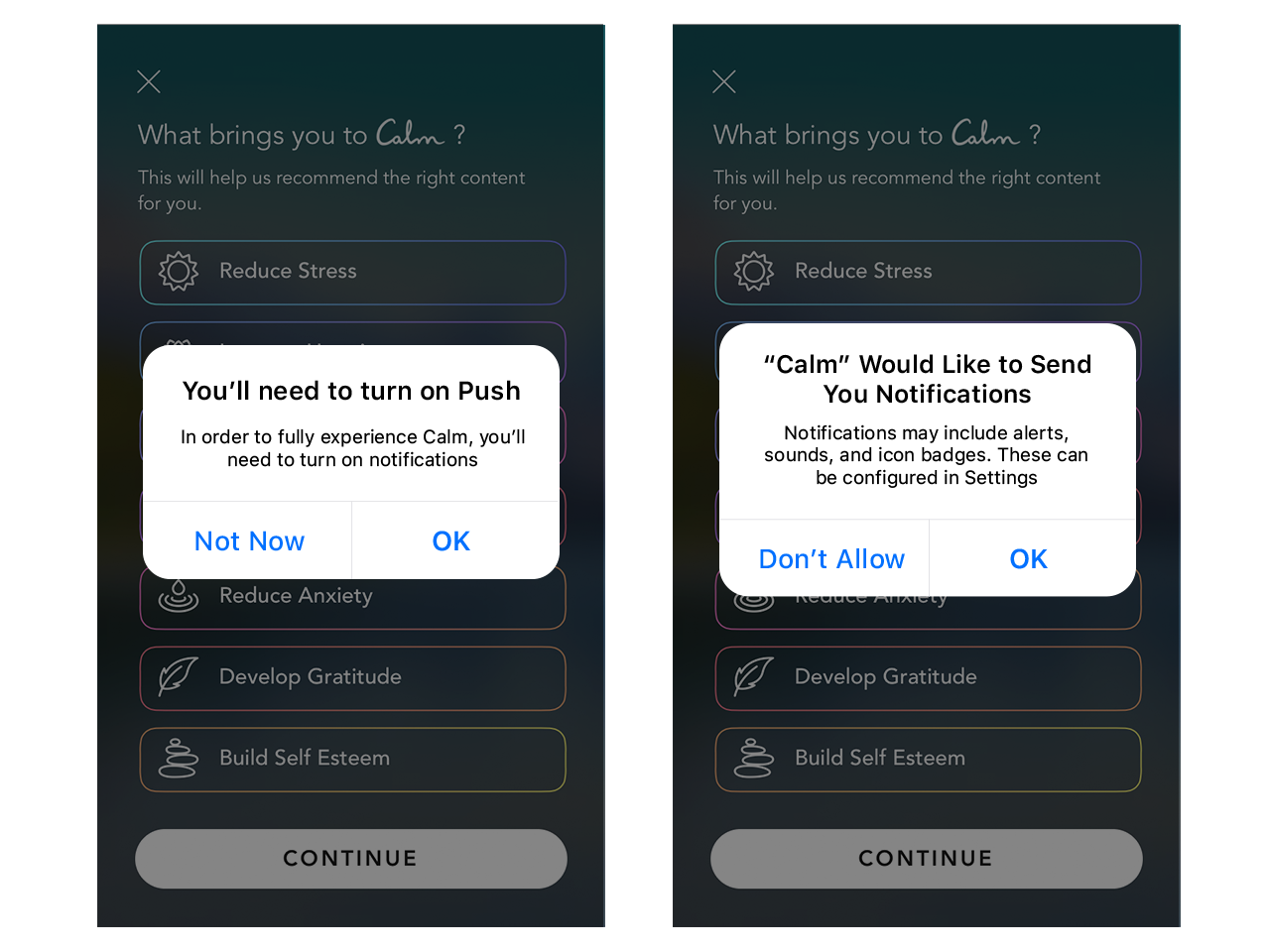
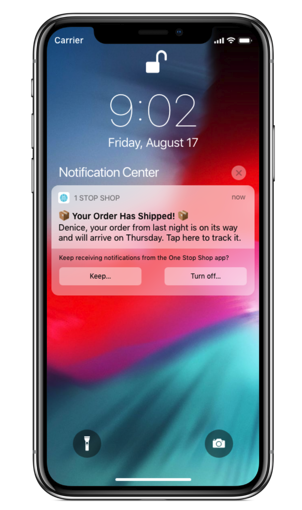
Sending a push notification may seem easy, but there’s more to it than meets the eye. You won’t find success with this tactic if you’re sending out sporadic, blanket messages to your users.
After a successful permissions campaign, you might think it’s time to have a breather. Not quite, I’m afraid.
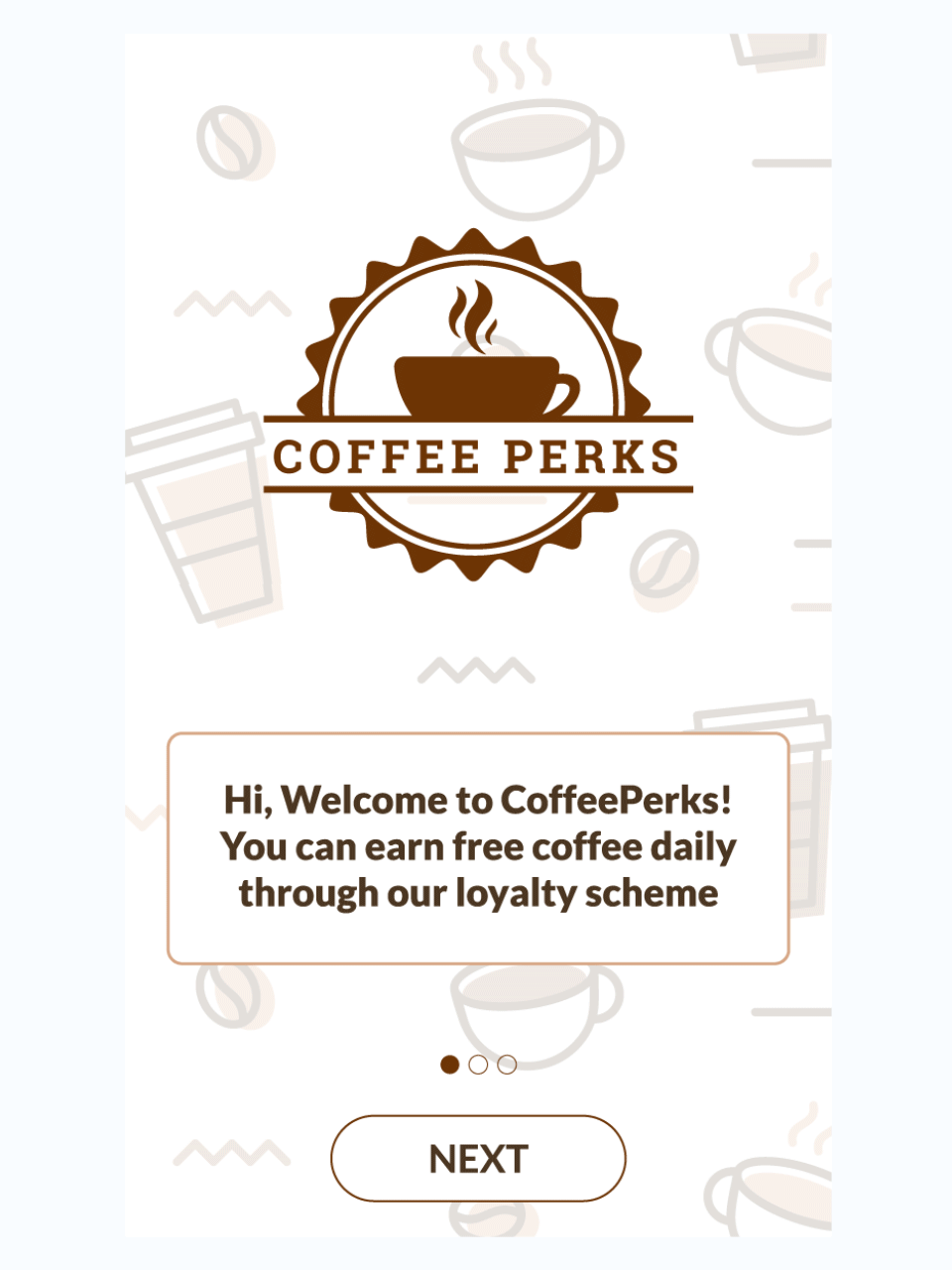

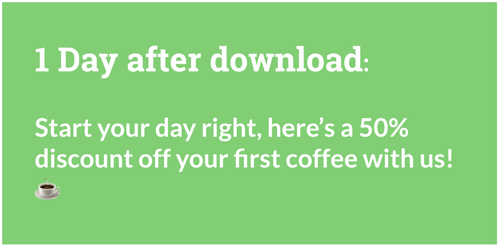
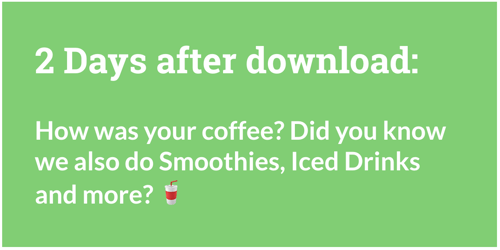
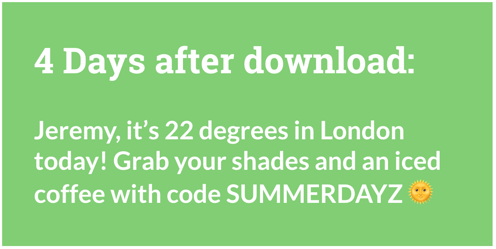

One of the quickest ways to your user's heart is by saving them time and energy. How can you do this? Through useful, informative push notifications. That’s how.

The accuracy with which a location can be tracked depends on the method of geo-locating you use:
Geo-targeting creates audience segments based on their IP address as opposed to their GPS.
It’s true what they say; it’s all about ‘location, location, location’. Who says that, you ask? Well, 60% of advertising professionals that agree that geo-targeted marketing efforts return stronger ROI’s. That’s who.


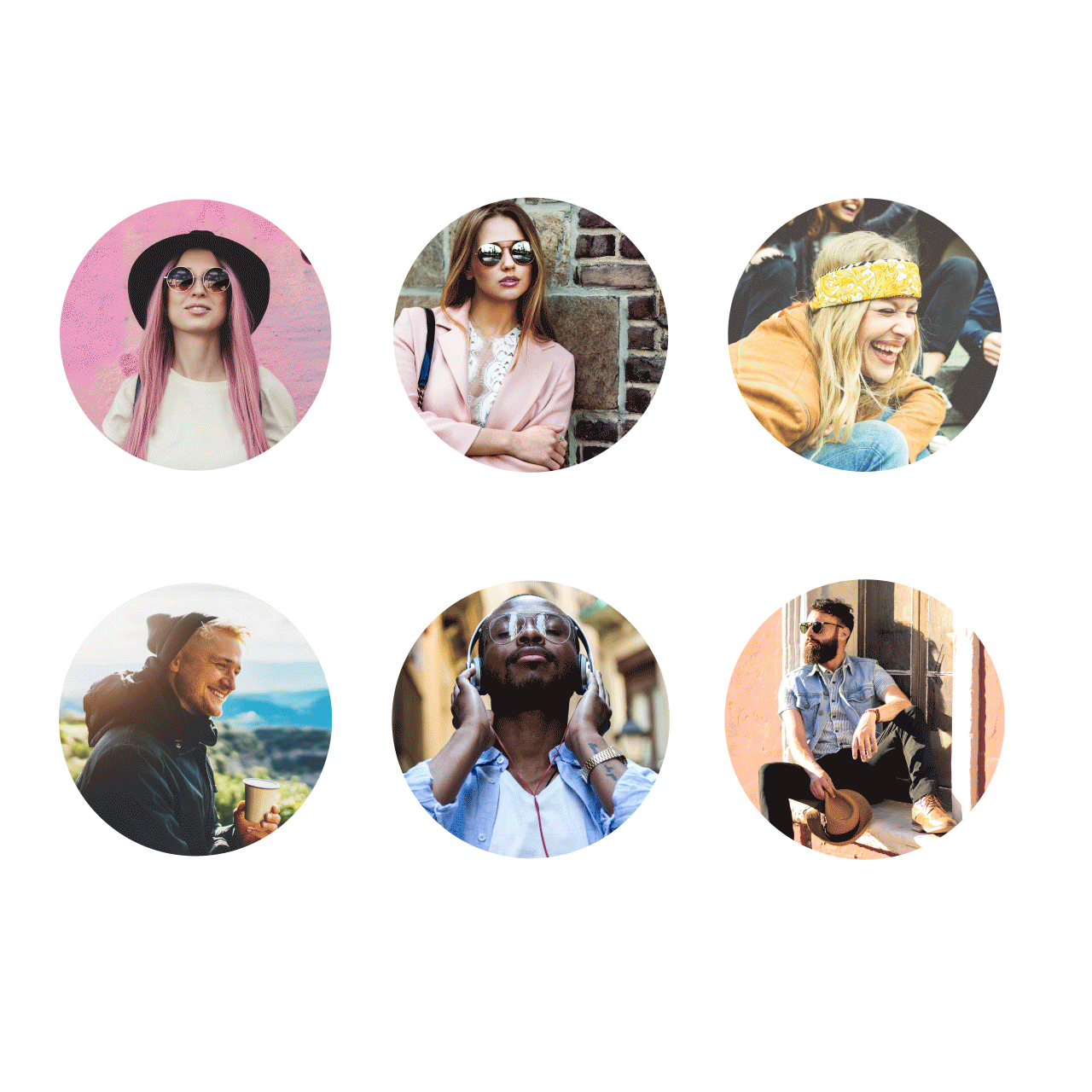

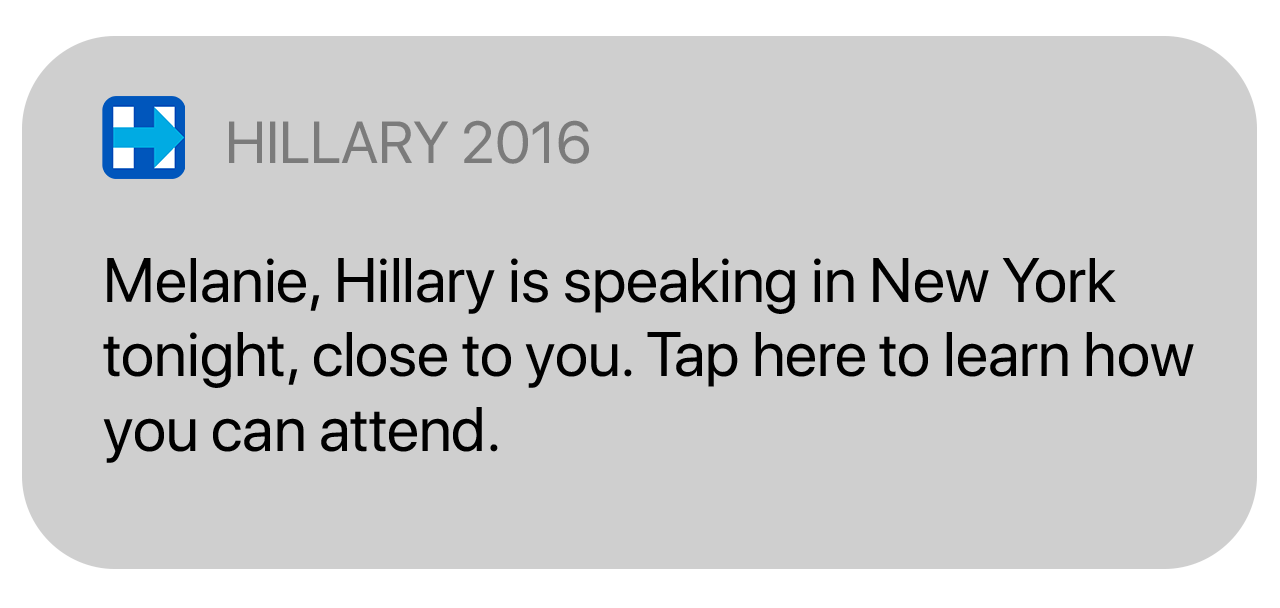
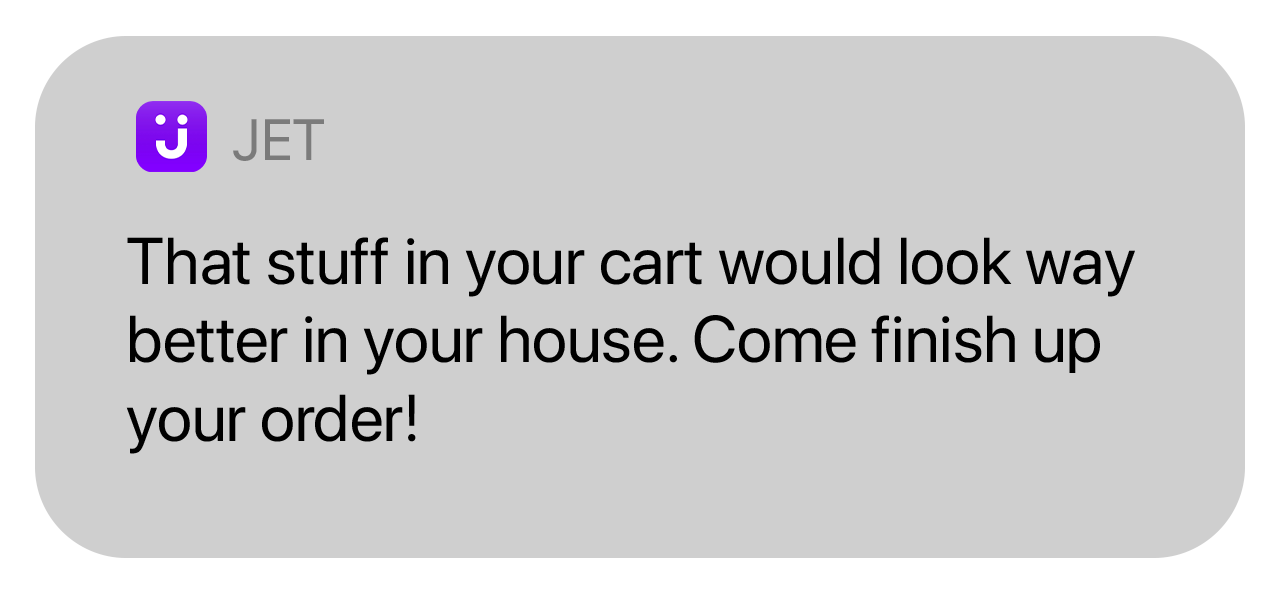
A push notification of this kind may have been formulated by creating a segment for ‘all cart abandonments within the last 48 hours’.
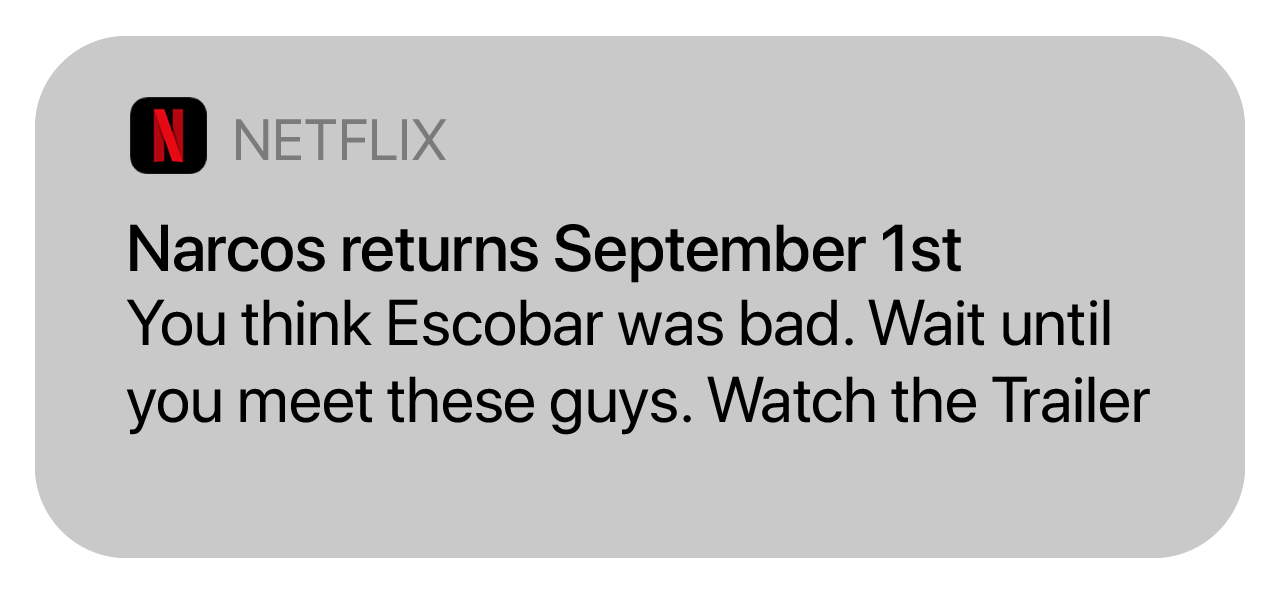
When it comes to choosing how to segment your audience, you must consider which type of segmentation is best suited and most cost/time effective for your business.

But how does a company with thousands, if not millions, of users tackle the mammoth task of personalising each message? There’s no magic stopwatch that adds extra hours into the day.
Add
inline with your message text. Replacing
tag_key
with your own key, as well as the required default value. Example let say you have the following 3 users.
User 1:
tags: {name: "James", current_stage: 10}
User 2:
tags: {name: "Dominique", current_stage: 9}
User 3:
tags: {}
Send a notification with the following contents:
Hey
This will result in the following notifications going out to each user.
User 1
Alternatively, marketers can use artificial intelligence and machine learning to implement personalisation. This may seem like a futuristic approach, but of marketers embracing this technology 63% have noted an increase in conversion rates, with 61% also recording an improved overall customer experience.
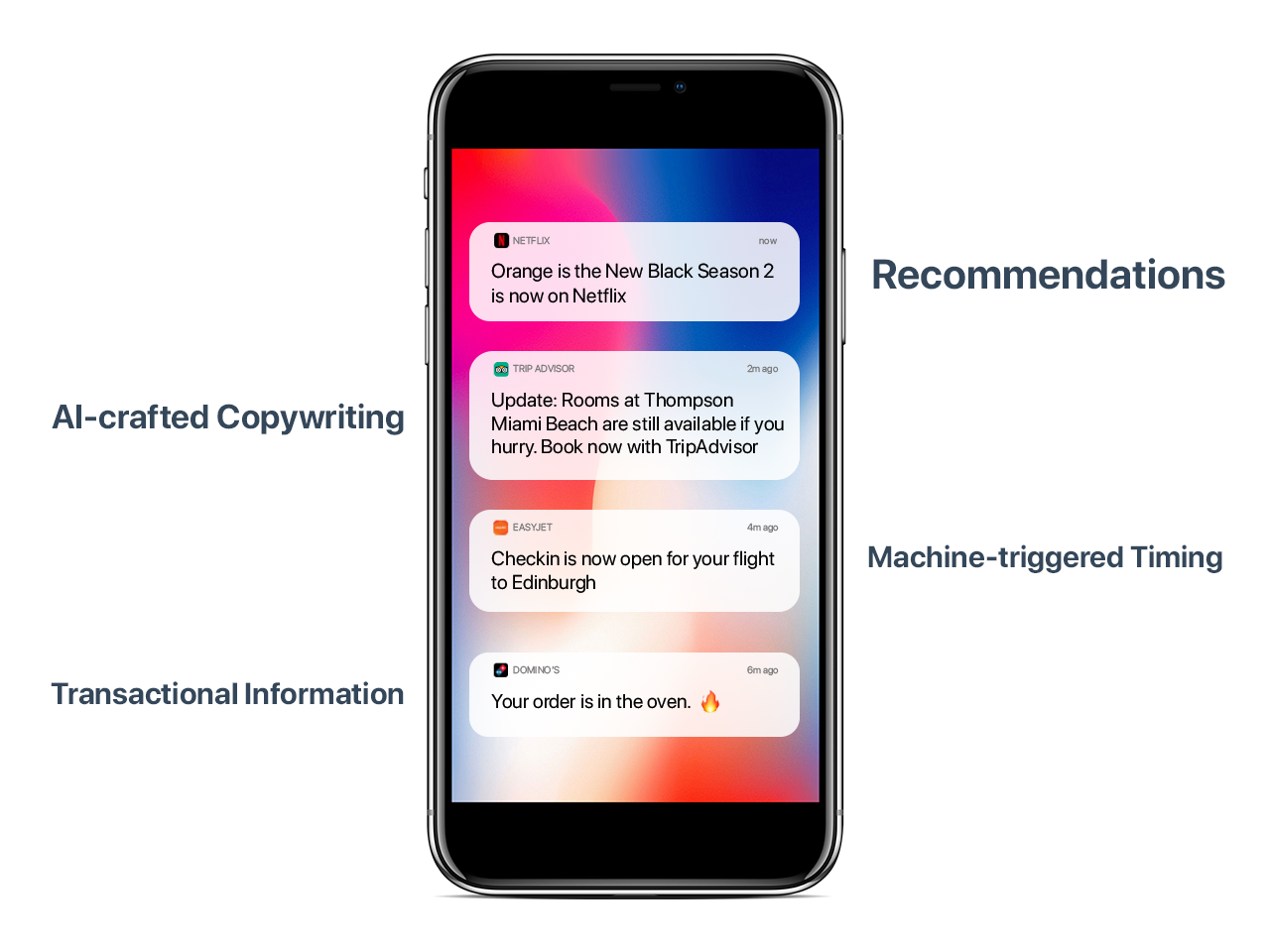
It is important, however, when personalising content, to strike the right balance.
They say a picture paints a thousand words, and when it comes to your push notification engagement rates, so do GiFs, videos and emojis. So don’t be frugal with them.

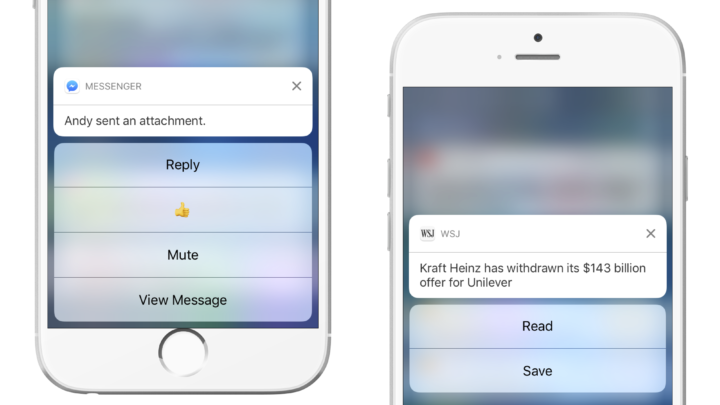
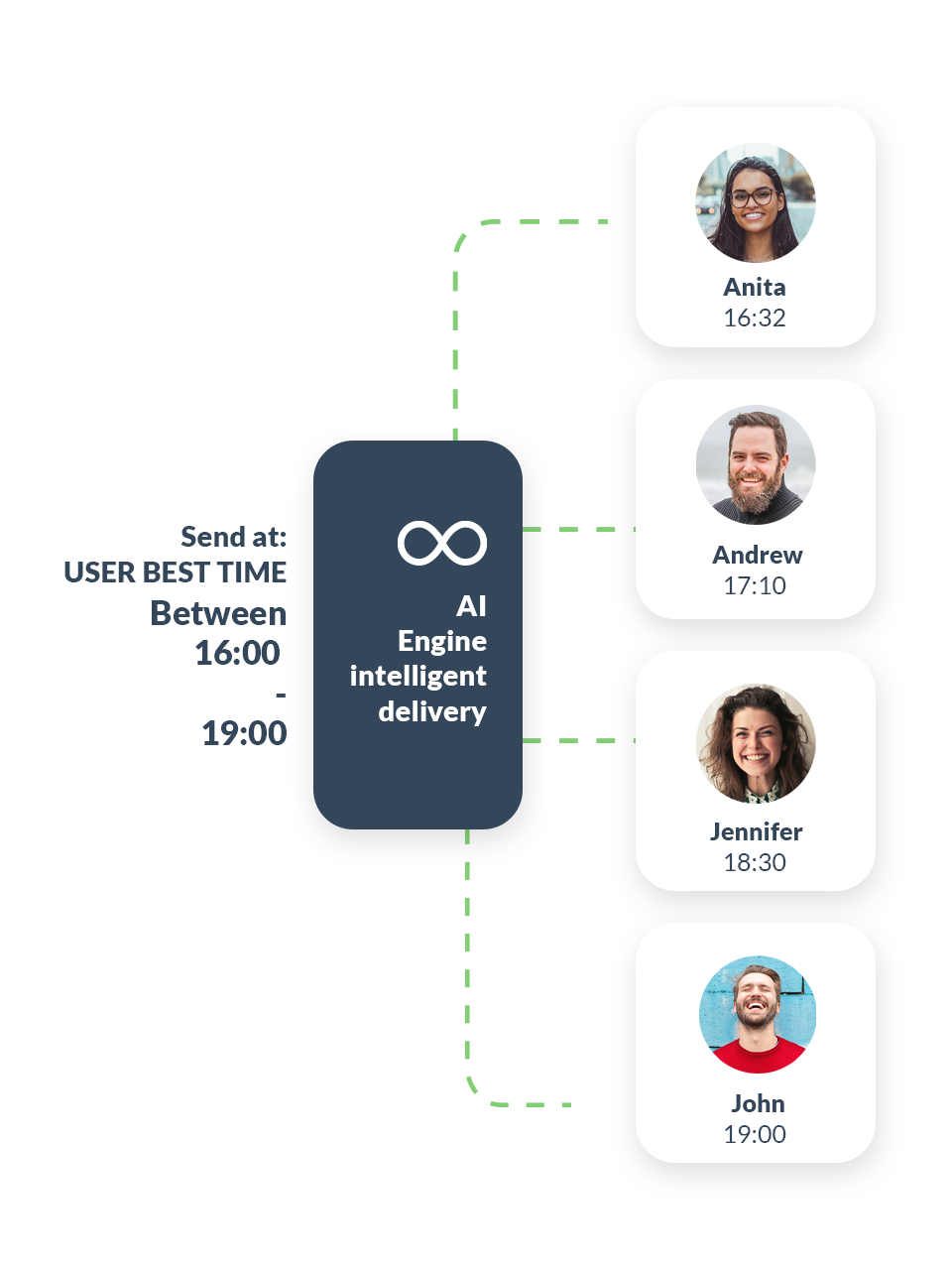
Now that we’ve covered the basics of push notifications, you have all the tools you need to create a great campaign.
We’ve come to a point in our consumption of digital content where we are heavily reliant on linking. In fact, we are so used to using links as navigation, it’s very frustrating when a link is either not present or doesn’t bring us to the page we were expecting.
There’s nothing more frustrating than spending hours perfecting copy, finalising media and testing variables to find your push has been truncated by the operating system.

For iOS:
Depending on where your push notification is being viewed each character limit may be different. Push messages can be anything between 150 characters (iPhone) to 230 characters (iPad) on iOS. This character allowance translates into 4 lines. After this point, your message will be truncated with a ‘...’ to end.
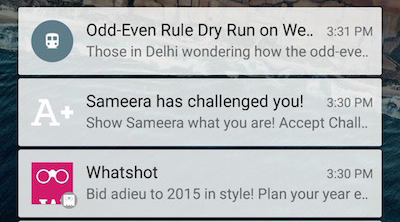
For Android:
On Android, initial character allowance stands at just 49 characters on the lock screen and notification drawer. However, notifications can be expanded to accommodate an estimated character maximum of 597.
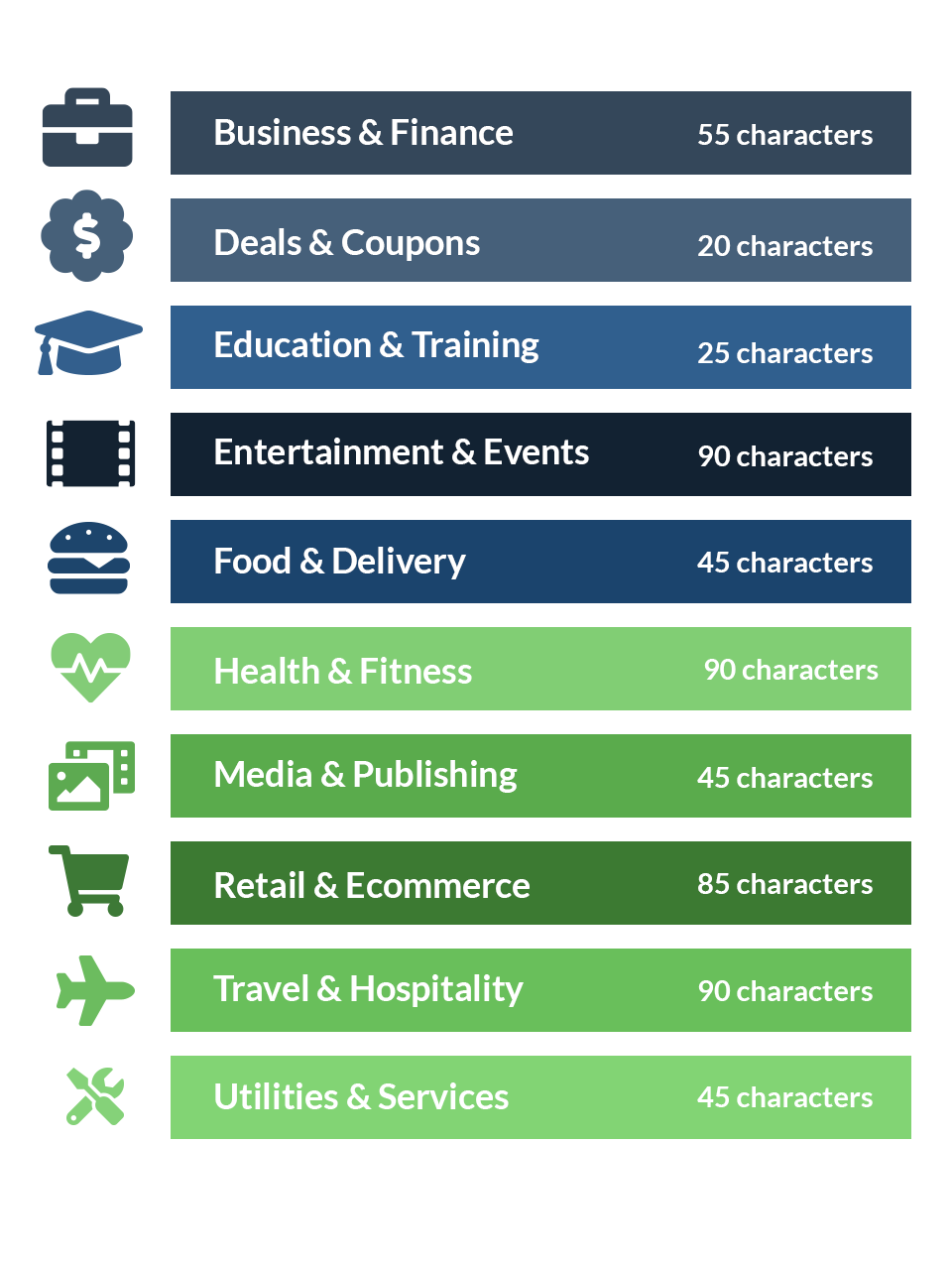
Now that we’ve handled length, we need to think about how you will convey your important message within such a small amount of space.
| Travel | Retail | Music |
|---|---|---|
| Dream | Want | Curated |
| Adventure | Sweet | Hand-picked |
| See | Amazing | Brand New |
| Hear | Incredible | Selected |
| Escape | Quick | Playlist |
| Memories | Running-out | Fresh |
| Indulge | Claim | Perfect |

So, what colour scheme should you use? Well, that really depends on the message you’re trying to convey.
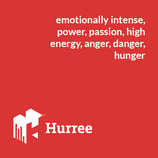



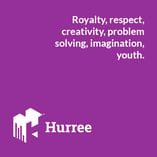



Logo colour is particularly important when it comes to conveying brand personality. The logo thumbnail appears in a push notification to identify the message sender. Your logo thumbnail in a push notification needs to be consistent with your overall branding so that your user instantly recognises it.
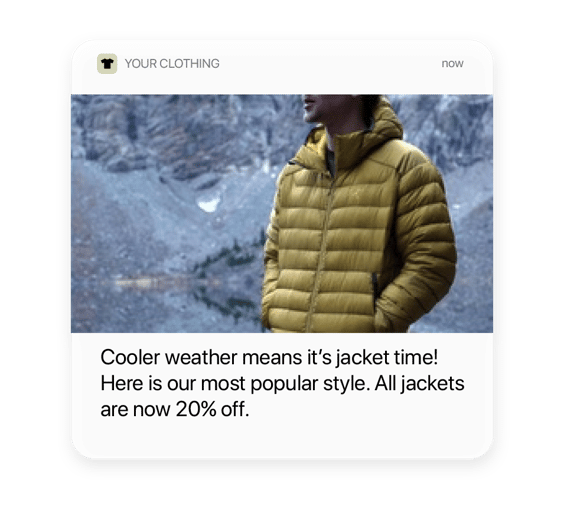
Hitting ‘send’ on a push notification campaign is not the end of the story!

Don’t get me wrong, tracking how many users open your app by directly tapping your push notification is an important part of push notification analytics. You can calculate open rates by dividing the number of unique opens by the number of push notifications sent (excluding bounce).
Unfortunately, you would be wrong.
Based on your goal, a further step is necessary to compare the conversion rates of each push. This is because the conversion rate is not directly correlated with the open rate.
Always track the entire journey of your users, otherwise you may run the risk of analysing incorrect data and falling at the first hurdle.
Not all push notifications are opened, that’s just a fact of life. Across industries, the average open rate for push notifications doesn’t get much higher than 5%.
% Still Active in following months
| Signed up in | 1 | 2 | 3 | 4 | 5 |
|---|---|---|---|---|---|
| JAN | 100% | 24% | 23% | 21% | 20% |
| FEB | 100% | 26% | 24% | 22% | 20% |
| MAR | 100% | 29% | 25% | 23% | 21% |
| APR | 100% | 32% | 26% | 23% | 21% |
| MAY | 100% | 33% | 28% | 24% | 21% |
As with most things, there are both advantages and disadvantages. A well created cohort analysis can offer you a clear distinction between growth and engagement, two variables which can often become intermingled. On the other hand, cohort studies can be rather time consuming to carry out. And you are, after all, a very busy marketer.